
Discover the Most Popular Arctic Ice Succulent Varieties

The Arctic region is home to a unique and diverse range of succulent plants. These hardy and resilient plants have adapted to the extreme cold and harsh conditions of the Arctic, making them a fascinating subject of study for botanists and enthusiasts alike. We will explore some of the most popular Arctic ice succulent varieties, their characteristics, and how they have evolved to survive in this challenging environment.
Throughout the article, we will delve into the different types of Arctic ice succulents, their distinctive features, and their natural habitats. We will discuss their ability to store water in their leaves, which enables them to thrive in the Arctic's freezing temperatures. Additionally, we will explore their unique adaptations, such as their compact size and ability to withstand prolonged periods of darkness, which allow them to survive in the harsh Arctic climate. Whether you are a succulent enthusiast looking to expand your collection or simply curious about the incredible resilience of Arctic plants, this article will provide you with a comprehensive introduction to the captivating world of Arctic ice succulents.
- Research different varieties of Arctic ice succulents
- Visit local nurseries or botanical gardens that specialize in Arctic ice succulents
- Join online forums or groups dedicated to Arctic ice succulent enthusiasts
- Read books or articles about Arctic ice succulent varieties
- Attend workshops or classes on Arctic ice succulents
- Experiment with growing different varieties of Arctic ice succulents at home
- Seek advice from experienced Arctic ice succulent growers
- Visit Arctic regions to observe and learn about native succulent varieties
- Collaborate with other succulent enthusiasts to exchange and discover new Arctic ice succulent varieties
- Keep a journal or record of your observations and experiences with different Arctic ice succulent varieties
- Frequently Asked Questions
Research different varieties of Arctic ice succulents
If you are a succulent lover and want to add a unique touch to your collection, Arctic ice succulents are the perfect choice. These stunning plants are known for their ability to thrive in cold climates and their striking icy appearance. In this article, we will explore some of the most popular varieties of Arctic ice succulents that you can consider adding to your collection.
1. Echeveria 'Ice Queen'
The Echeveria 'Ice Queen' is a popular choice among succulent enthusiasts. With its pale blue-green leaves that resemble frost-covered ice, this variety adds an elegant and ethereal touch to any succulent arrangement. It forms tight rosettes and produces delicate pink flowers during the blooming season.
2. Sedum 'Arctic Frost'
The Sedum 'Arctic Frost' is another stunning Arctic ice succulent variety. Its fleshy leaves are variegated with shades of pale green and silver, resembling patches of ice. This succulent is known for its ability to change colors throughout the year, turning even more vibrant during colder months.
3. Sempervivum 'Arctic Ice'
The Sempervivum 'Arctic Ice' is a hardy succulent that features tight rosettes of fleshy leaves. Its leaves are covered in a white powdery coating, giving it a frosty appearance. This variety is not only visually appealing but also highly resilient, making it an excellent choice for beginners.
4. Crassula 'Ice Tower'
If you are looking for a tall succulent with an icy twist, the Crassula 'Ice Tower' is an excellent choice. This variety features slender, columnar stems covered in thick, powdery leaves. Its unique structure and icy color make it a standout addition to any succulent collection.
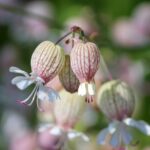 Discover Beautiful Succulents with Bell-Shaped Flowers: A Guide
Discover Beautiful Succulents with Bell-Shaped Flowers: A Guide5. Agave 'Frostbite'
The Agave 'Frostbite' is a striking Arctic ice succulent variety that can add a touch of drama to your collection. With its spiky, blue-gray leaves that have a frosty texture, this succulent demands attention. It is a slow-growing variety that forms a compact rosette, making it suitable for smaller spaces.
Adding Arctic ice succulents to your collection not only introduces a unique aesthetic but also allows you to explore plants that thrive in colder climates. These varieties are not only beautiful but also relatively easy to care for, making them a great choice for both beginners and experienced succulent enthusiasts.
Visit local nurseries or botanical gardens that specialize in Arctic ice succulents
If you're fascinated by the unique beauty of Arctic ice succulents, then a visit to your local nurseries or botanical gardens that specialize in these plants is a must. These specialized establishments are dedicated to cultivating and displaying a wide variety of Arctic ice succulent species, allowing you to explore and appreciate their mesmerizing forms and colors.
By visiting these nurseries or gardens, you'll have the opportunity to observe the different types of Arctic ice succulents up close, and learn about their specific care requirements. The knowledgeable staff can provide valuable insights and tips on how to successfully grow and maintain these captivating plants in your own garden.
Discover the most popular Arctic ice succulent varieties:
- 1. Frostbite Jade (Crassula arctica): Known for its striking icy blue-green leaves, this succulent is a true showstopper. Its compact growth habit and ability to adapt to various light conditions make it a versatile choice for both indoor and outdoor settings.
- 2. Snowflake Echeveria (Echeveria nivea): This succulent features powdery white leaves that resemble delicate snowflakes. Its rosette-shaped foliage and ability to produce beautiful pink flowers make it a favorite among succulent enthusiasts.
- 3. Frosty Haworthia (Haworthia cooperi): With its translucent leaves and distinct window-like markings, the Frosty Haworthia adds a touch of elegance to any succulent collection. It thrives in bright, indirect light and is known for its low maintenance requirements.
- 4. Iceberg Sedum (Sedum spectabile): This hardy succulent is characterized by its thick, fleshy leaves that turn a stunning shade of icy pink during cooler months. Its ability to attract butterflies and bees makes it a popular choice for pollinator gardens.
These are just a few examples of the incredible Arctic ice succulent varieties you can encounter during your visit. Each one has its own unique characteristics and charm, adding a touch of frosty allure to your collection or garden.
So, if you're ready to embark on a journey to explore the enchanting world of Arctic ice succulents, make sure to plan a visit to your local nurseries or botanical gardens. You'll be amazed by the diverse range of species and the beauty they bring to any setting.
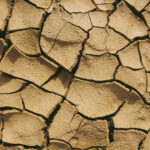 Thriving Succulents: Discover Fast-Growing Varieties
Thriving Succulents: Discover Fast-Growing VarietiesJoin online forums or groups dedicated to Arctic ice succulent enthusiasts
Joining online forums or groups dedicated to Arctic ice succulent enthusiasts is a great way to connect with fellow succulent lovers and learn more about the most popular varieties. These forums and groups create a space for like-minded individuals to share their experiences, tips, and advice regarding Arctic ice succulents.
By actively participating in these online communities, you can gain valuable insights into the different varieties of Arctic ice succulents that are highly sought after. Members often share their personal recommendations and experiences, which can help you narrow down your choices and decide which varieties to add to your collection.
Additionally, online forums and groups provide a platform for asking specific questions and seeking expert advice. Whether you're a beginner or an experienced succulent gardener, you can benefit from the collective knowledge and expertise of the community. From propagation techniques to best practices for care and maintenance, you can find a wealth of information that will help you successfully grow and nurture your Arctic ice succulents.
Furthermore, these communities often organize virtual events, such as webinars, workshops, and virtual plant swaps. Participating in these events allows you to interact directly with experienced growers and enthusiasts, expanding your knowledge and network within the Arctic ice succulent community.
Remember, when participating in online forums or groups, it's essential to be respectful and follow the community guidelines. Engage in meaningful discussions, share your experiences, and be open to learning from others. The Arctic ice succulent community is a supportive and inclusive one, and by being an active member, you'll contribute to its growth and development.
Read books or articles about Arctic ice succulent varieties
If you're interested in learning more about Arctic ice succulent varieties, one of the best ways to gain knowledge is by reading books or articles dedicated to this subject. These resources provide valuable insights into different types of succulents that thrive in Arctic climates and offer tips on how to care for them.
 Top Succulent Plants: Perfect Elephant Food for a Nutritious Feast
Top Succulent Plants: Perfect Elephant Food for a Nutritious FeastWhen choosing books or articles to read, look for ones written by experts in the field of succulent cultivation or Arctic gardening. These authors have extensive knowledge and experience with Arctic ice succulents, ensuring you receive accurate and reliable information.
Reading about Arctic ice succulent varieties can also inspire you with ideas for your own succulent collection. You may discover new and unique species that you never knew existed, sparking excitement and curiosity to explore further.
Key Benefits of Reading Books or Articles:
- Expand your knowledge: Reading books or articles about Arctic ice succulent varieties can help you expand your knowledge about the different types of succulents that thrive in extreme cold conditions.
- Learn care techniques: These resources often provide insights into the specific care requirements of Arctic ice succulents, including watering, light exposure, and temperature preferences.
- Discover new species: By reading about Arctic ice succulent varieties, you may come across unique species that are not commonly found in traditional succulent collections.
- Gain inspiration: Exploring the world of Arctic ice succulents through books or articles can ignite your creativity and inspire you to experiment with new succulent arrangements or terrarium designs.
So, don't hesitate to dive into the world of Arctic ice succulent literature and start exploring the fascinating world of these unique and resilient plants.
Attend workshops or classes on Arctic ice succulents
If you are interested in learning more about Arctic ice succulents and how to care for them, attending workshops or classes is a great way to gain knowledge and hands-on experience. These educational sessions are usually led by experienced horticulturists or succulent enthusiasts who can provide valuable insights and tips.
During these workshops or classes, you will have the opportunity to learn about the different varieties of Arctic ice succulents, their unique characteristics, and the specific care requirements they need to thrive. You can also learn about propagation techniques, how to create stunning arrangements with these succulents, and how to troubleshoot common issues that may arise.
By attending these educational sessions, you can expand your succulent knowledge and gain confidence in growing Arctic ice succulents in your own garden or indoor space. It's also a great way to connect with fellow plant lovers and share experiences and tips.
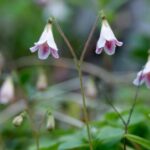 Discover Low-Maintenance Bush-Like Plants That Resemble Succulents
Discover Low-Maintenance Bush-Like Plants That Resemble SucculentsTo find workshops or classes on Arctic ice succulents, consider checking with local botanical gardens, nurseries, or horticultural societies. They often host these types of events or can provide recommendations on where to find them.
Experiment with growing different varieties of Arctic ice succulents at home
Arctic ice succulents are a fascinating addition to any garden or indoor plant collection. These unique plants have adapted to survive in the harsh conditions of the Arctic region, making them hardy and resilient. If you're looking to add a touch of exoticism to your plant collection, experimenting with different varieties of Arctic ice succulents is a fantastic idea.
Why choose Arctic ice succulents?
Arctic ice succulents are not only visually stunning but also low-maintenance plants. Their thick, fleshy leaves store water, allowing them to survive in arid conditions. This means that you won't have to worry about watering them frequently. Additionally, these succulents come in a wide range of shapes, sizes, and colors, making them a versatile choice for plant enthusiasts.
Popular varieties to consider
When it comes to Arctic ice succulents, there are several popular varieties that you can explore. Each variety has its own unique characteristics and care requirements, so it's essential to choose the ones that align with your preferences and gardening capabilities.
- Arctic Jade: This variety features striking jade-green leaves that resemble tiny icebergs. Its compact size makes it an excellent choice for small spaces or as part of a succulent arrangement.
- Polar Pearl: With its silvery-white leaves, Polar Pearl adds an ethereal touch to any garden. This variety is known for its ability to tolerate colder temperatures, making it perfect for those living in cooler climates.
- Frosty Fern: If you're looking for a succulent that mimics the delicate beauty of ferns, Frosty Fern is an excellent choice. Its frilly, pale green leaves create a soft and elegant look.
Other popular varieties include Arctic Glow, Ice Queen, and Snowflake Surprise. Each of these varieties offers its own unique charm and can be a great addition to your collection.
Caring for Arctic ice succulents
Like any other succulent, Arctic ice succulents require minimal care. They thrive in well-draining soil and prefer indirect sunlight. Overwatering can be detrimental to these plants, so it's crucial to allow the soil to dry out between waterings. As with any plant, it's always a good idea to research the specific care requirements of each variety you choose to ensure optimal growth and health.
By experimenting with different varieties of Arctic ice succulents, you'll not only add an element of uniqueness to your garden but also gain a deeper appreciation for the resilience of these incredible plants. So, why not embark on this exciting journey and bring the beauty of the Arctic into your own home?
 Top Yellow Flowering Succulent Ground Cover Options for Your Garden
Top Yellow Flowering Succulent Ground Cover Options for Your GardenSeek advice from experienced Arctic ice succulent growers
When it comes to growing Arctic ice succulents, seeking advice from experienced growers is essential. These individuals have dedicated years to cultivating these unique plants and have a wealth of knowledge to share. Whether you are a beginner or an experienced gardener, their insights can help you achieve success in growing and caring for Arctic ice succulents.
One way to connect with experienced Arctic ice succulent growers is by joining online forums or social media groups dedicated to these plants. Here, you can ask questions, share experiences, and learn from others who have already mastered the art of cultivating these stunning succulents.
Attend Arctic ice succulent workshops and events
Another great way to gain valuable insights into growing Arctic ice succulents is by attending workshops and events specifically focused on these plants. These gatherings often feature presentations by seasoned growers, offering valuable tips and tricks to help you succeed in your own gardening endeavors.
These workshops and events also provide a fantastic opportunity to connect with fellow enthusiasts, exchange ideas, and build a network within the Arctic ice succulent community. You can learn from others' experiences, share your own knowledge, and develop lasting relationships with like-minded individuals who share your passion for these unique plants.
Experiment with different Arctic ice succulent varieties
Arctic ice succulents come in a wide range of varieties, each with its own distinct characteristics and requirements. One of the best ways to discover the most popular Arctic ice succulents is by experimenting with different varieties in your own garden.
Start by selecting a few popular varieties, such as the Arctic Pearl, Frosty Jade, and Ice Queen. These varieties are known for their stunning beauty and resilience in cold climates. Plant them in different areas of your garden to observe how they thrive and adapt to various conditions.
- Arctic Pearl: This variety features pale green leaves with a silvery sheen, resembling glistening pearls. Its compact size makes it an excellent choice for small spaces.
- Frosty Jade: With its icy blue-gray leaves, Frosty Jade adds a touch of elegance to any garden. It is known for its ability to withstand freezing temperatures.
- Ice Queen: As the name suggests, Ice Queen boasts striking white leaves, resembling a crown of ice. This variety is particularly hardy and can tolerate harsh Arctic conditions.
By experimenting with different Arctic ice succulent varieties, you can discover the ones that thrive in your specific climate and growing conditions. This firsthand experience will not only help you determine the most popular varieties but also allow you to develop a deeper understanding of these fascinating plants.
 Dramatic Succulents: Discover the Varieties with Striking, Long Leaves
Dramatic Succulents: Discover the Varieties with Striking, Long LeavesRemember, growing Arctic ice succulents is a journey of exploration and learning. By seeking advice from experienced growers, attending workshops, and experimenting with different varieties, you can embark on an exciting adventure and discover the most popular Arctic ice succulent varieties.
Visit Arctic regions to observe and learn about native succulent varieties
If you are an avid succulent enthusiast or simply have a love for unique plant species, a visit to the Arctic regions will offer you a fascinating experience. These icy landscapes are not only home to breathtaking natural beauty but also host a variety of succulent plants that have adapted to survive in extreme conditions.
What are Arctic ice succulents?
Arctic ice succulents, also known as polar succulents, are a group of plants that have evolved to thrive in cold and harsh environments. These succulents have developed specialized adaptations to withstand freezing temperatures, strong winds, and limited water availability.
Here are some of the most popular Arctic ice succulent varieties:
- Arctic Moss (Bryum argenteum): Known for its silver-green appearance, Arctic Moss is a small succulent plant that forms dense cushions in Arctic regions. It can tolerate extreme cold and grows in rocky areas.
- Arctic Poppy (Papaver radicatum): With its vibrant yellow flowers, the Arctic Poppy adds a splash of color to the Arctic landscape. This succulent has fleshy leaves and can survive in freezing temperatures.
- Arctic Pearlwort (Sagina nodosa): The Arctic Pearlwort is a low-growing succulent that forms dense mats. It has small, round leaves and tiny white flowers. This plant is well-adapted to survive in Arctic tundra.
- Arctic Willow (Salix arctica): As the name suggests, the Arctic Willow is a succulent shrub that grows in the Arctic regions. Its small, silver leaves and yellow flowers make it a visually appealing plant.
Exploring the Arctic regions will give you an opportunity to witness these incredible succulent varieties in their natural habitat. It's important to remember that these plants are protected, and it is crucial to respect their environment and not disturb them.
Why are Arctic ice succulents unique?
Arctic ice succulents have evolved unique characteristics to survive in their extreme habitat. Their ability to store water in their fleshy leaves and stems allows them to withstand long periods of drought. Additionally, their compact growth forms help protect them from strong winds and freezing temperatures.
These succulents have adapted to their environment over thousands of years, and studying them can provide valuable insights into plant adaptations and their potential applications in other areas.
 Best Heat-Resistant Succulents: Thriving in High Temperatures
Best Heat-Resistant Succulents: Thriving in High TemperaturesPlan your trip to the Arctic regions and embark on an adventure to discover the beauty and resilience of Arctic ice succulents. Witnessing these unique plant species firsthand will leave you with a newfound appreciation for the incredible diversity of succulents that exist in our world.
Collaborate with other succulent enthusiasts to exchange and discover new Arctic ice succulent varieties
Are you a succulent enthusiast looking to expand your collection? Look no further than the fascinating world of Arctic ice succulents. These unique plants have gained popularity among collectors due to their stunning beauty and ability to thrive in cold climates.
One of the best ways to discover new varieties of Arctic ice succulents is to collaborate with other enthusiasts. By joining online communities, attending succulent swaps, or participating in plant forums, you can exchange knowledge and plants with fellow collectors. This collaborative approach allows you to broaden your horizons and uncover hidden gems within the Arctic ice succulent world.
Benefits of Collaborating with Other Succulent Enthusiasts
Collaborating with other succulent enthusiasts offers numerous benefits. Firstly, it provides a platform for sharing experiences and insights. By discussing cultivation techniques, care tips, and personal experiences, you can learn from others and enhance your own succulent-growing skills. Additionally, exchanging plants with fellow enthusiasts allows you to expand your collection without breaking the bank.
Furthermore, collaborating with other succulent enthusiasts exposes you to a wider range of Arctic ice succulent varieties. Each collector brings their unique selection to the table, enabling you to discover new and rare species you may not have encountered otherwise. This collaborative effort fosters a sense of community and encourages the preservation and propagation of these captivating plants.
Join Online Communities and Forums
An excellent way to connect with other Arctic ice succulent enthusiasts is by joining online communities and forums dedicated to succulent cultivation. These platforms provide a space for like-minded individuals to share their experiences, seek advice, and showcase their collections.
By actively engaging in these communities, you can participate in discussions, ask questions, and even arrange plant swaps with other members. These interactions can lead to exciting discoveries and connections with fellow enthusiasts who share your passion for Arctic ice succulents.
 Explore Stunning Tri Color Succulents: Discover Vibrant Varieties!
Explore Stunning Tri Color Succulents: Discover Vibrant Varieties!Attend Succulent Swaps and Plant Fairs
Another way to collaborate and discover new Arctic ice succulent varieties is by attending succulent swaps and plant fairs. These events bring together a diverse group of collectors, nurseries, and vendors, creating the perfect opportunity to expand your succulent collection.
At these gatherings, you can not only exchange plants but also learn from experienced growers and experts through workshops and seminars. It's a chance to immerse yourself in the world of succulents and connect with individuals who share your enthusiasm.
Collaborating with other succulent enthusiasts is a fantastic way to discover and exchange new Arctic ice succulent varieties. By joining online communities, participating in succulent swaps, and attending plant fairs, you can expand your collection, learn from others, and contribute to the preservation of these captivating plants. So, why not start collaborating today and unlock a whole new world of Arctic ice succulents?
Keep a journal or record of your observations and experiences with different Arctic ice succulent varieties
When it comes to exploring the fascinating world of Arctic ice succulents, it's crucial to keep track of your observations and experiences with various varieties. By maintaining a journal or record, you can document the growth patterns, color changes, and unique characteristics of each plant. Not only will this help you better understand the individual needs of different Arctic ice succulents, but it will also serve as a valuable reference for future gardening endeavors.
Whether you are a seasoned succulent enthusiast or just starting your journey into the icy world of these captivating plants, a journal can be an invaluable tool. It allows you to record important information about your plants, including their names, origins, and specific care requirements. Additionally, you can document any challenges or successes you encounter along the way, providing a comprehensive overview of your experiences.
Benefits of keeping a journal for Arctic ice succulents
Keeping a journal for your Arctic ice succulents offers several benefits:
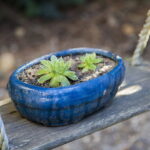 Indoor Succulents: Soft-Leaved Varieties Available?
Indoor Succulents: Soft-Leaved Varieties Available?- Tracking Growth and Changes: By regularly recording the growth patterns and changes in your plants, you can monitor their development over time. This will help you identify any potential issues or adjustments needed in their care routine.
- Identifying Varieties: With a detailed journal, you can easily identify different Arctic ice succulent varieties based on their distinct characteristics. This knowledge will enable you to provide targeted care and create a well-curated collection.
- Learning from Experiences: Documenting your experiences with Arctic ice succulents allows you to learn from your successes and failures. By analyzing your journal entries, you can refine your cultivation techniques and make informed decisions in the future.
- Sharing Knowledge: A journal can serve as a valuable resource for sharing your knowledge with fellow succulent enthusiasts. You can share your experiences, tips, and insights with others, fostering a sense of community and promoting the love for Arctic ice succulents.
Remember to include essential details in your journal entries, such as the date of each observation, environmental conditions, watering schedules, and any notable changes you observe. By maintaining a consistent and organized record, you will be able to reference and compare your findings easily.
A journal is an essential tool for any Arctic ice succulent enthusiast. It allows you to keep a detailed record of your observations and experiences, providing valuable insights into the unique needs of each variety. By tracking their growth, identifying different species, and learning from your experiences, you can become a knowledgeable and successful Arctic ice succulent gardener. So grab a pen and start documenting your journey into the mesmerizing world of Arctic ice succulents!
Frequently Asked Questions
1. What are Arctic ice succulents?
Arctic ice succulents are a type of plant that are native to the Arctic region. They have thick, fleshy leaves that help them retain water in cold and dry conditions.
2. How do Arctic ice succulents survive in extreme cold?
Arctic ice succulents have adapted to survive in extreme cold by storing water in their leaves and stems. This allows them to withstand freezing temperatures and periods of drought.
3. Can Arctic ice succulents be grown indoors?
 Exploring the Unique World of Blue Succulent Plants: Are They Real?
Exploring the Unique World of Blue Succulent Plants: Are They Real?Yes, Arctic ice succulents can be grown indoors as long as they receive enough sunlight and are planted in well-draining soil. They make beautiful additions to any indoor garden or succulent collection.
4. Are Arctic ice succulents difficult to care for?
Arctic ice succulents are generally low-maintenance plants. They require infrequent watering and thrive in cooler temperatures. However, they do need adequate sunlight and well-draining soil to prevent root rot.
If you want to read more articles similar to Discover the Most Popular Arctic Ice Succulent Varieties, you can visit the Varieties and Colors category.

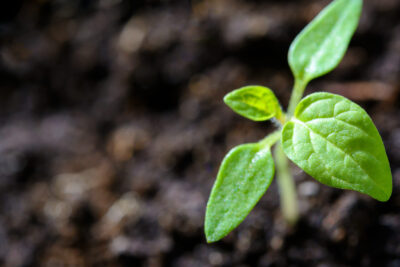
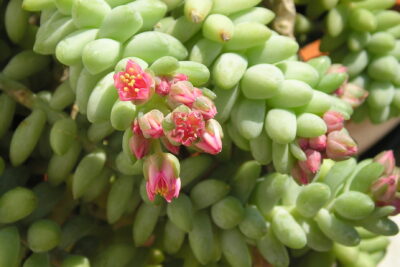



You Must Read